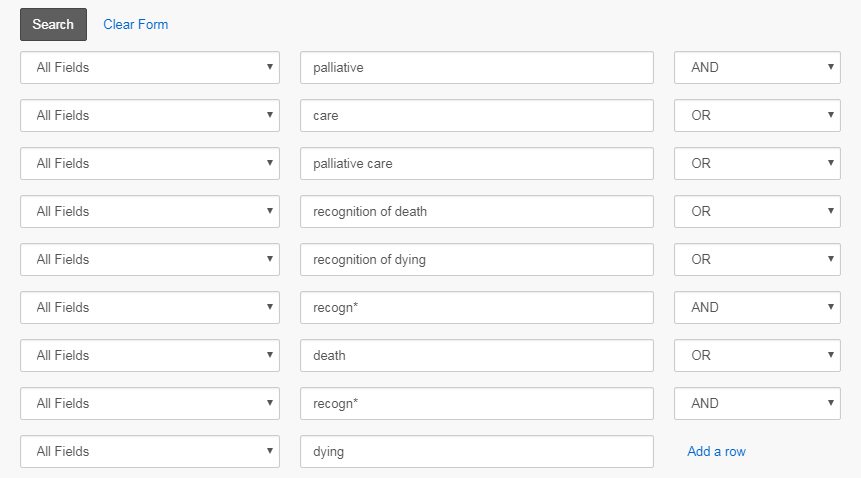Introduction
Palliative care is a sphere of healthcare that is concerned with terminally ill patients (Kelley & Morrison, 2015). Medical workers play a significant role in the lives of such patients, as they provide the necessary support to people facing death. This paper will explain nurses’ functions in palliative care and describe search strategies for information seeking.
The Issue
According to Sekse, Hunskår, and Ellingsen (2018), the number of nurses in healthcare makes them one of the largest groups of medical specialists in the field. However, their roles in the lives of patients are not defined, which may affect their ability to care for patients. Sekse et al. (2018) note that nurses have to make important decisions regarding the well-being of patients and their families.
Moreover, as palliative care deals with the terminally-ill, nurses working in this sphere have to possess unique qualities to adequately accommodate the needs of their clients (Low et al., 2016). The issue of establishing nurses’ roles in palliative care is also connected to the level of awareness that nurses may possess regarding their patients’ state (Siouta et al., 2016). Nurses need to be able to recognize when their patient is dying and in need of special care (Taylor, Dowding, & Johnson, 2017).
The Search Strategy
The search for appropriate journal articles about palliative care has to follow a particular strategy to find the best available research. First of all, it is necessary to establish keywords that directly pertain to the topic of interest. In this case, the central research question is concerned with palliative care. Therefore, the words ‘palliative’ and ‘care’ should be included in the search. As can be noticed in Figure 1, the first two keywords are ‘palliative’ and ‘care’ because their presence in the article is necessary.

As these words have to appear together to eliminate papers discussing other spheres of healthcare, these terms are connected by a Boolean operator ‘AND.’ Other option also has these words together to ensure that they are next to each other in the title or contents of the article. Furthermore, this phrase can narrow the scope of the search.
Other keywords are synonymous with palliative care. For example, the key phrase “recognition of dying” can be used to find articles that are concerned with the topic. Thus, such key terms are used to broaden the search. The Boolean operator ‘OR’ is also used to provide one with more results, as some articles may not have palliative care in the title or substitute it with other terms. The truncation symbols, shown in Figure 2, also improve the search by including all forms of such words as ‘recognize’ and ‘recognition.’ As a result, the databases showed various articles that discussed the elements and specifics of palliative care.

Conclusion
Articles about palliative care often discuss the roles of professionals in assisting patients. The search for studies in palliative care has to include relevant keywords that are directly connected to the topic. The results of a search depend on one’s knowledge of appropriate keywords, symbols, and Boolean operators.
References
Kelley, A. S., & Morrison, R. S. (2015). Palliative care for the seriously ill. New England Journal of Medicine, 373(8), 747-755.
Low, J., Vickerstaff, V., Davis, S., Bichard, J., Greenslade, L., Hopkins, K.,… Jones, L. (2016). Palliative care for cirrhosis: A UK survey of health professionals’ perceptions, current practice and future needs. Frontline Gastroenterology, 7(1), 4-9.
Sekse, R. J. T., Hunskår, I., & Ellingsen, S. (2018). The nurse’s role in palliative care: A qualitative meta‐synthesis. Journal of Clinical Nursing, 27(1-2), e21-e38.
Siouta, N., van Beek, K., Preston, N., Hasselaar, J., Hughes, S., Payne, S.,… Hodiamont, F. (2016). Towards integration of palliative care in patients with chronic heart failure and chronic obstructive pulmonary disease: A systematic literature review of European guidelines and pathways. BMC Palliative Care, 15(1), 18.
Taylor, P., Dowding, D., & Johnson, M. (2017). Clinical decision making in the recognition of dying: A qualitative interview study. BMC Palliative Care, 16(1), 11.